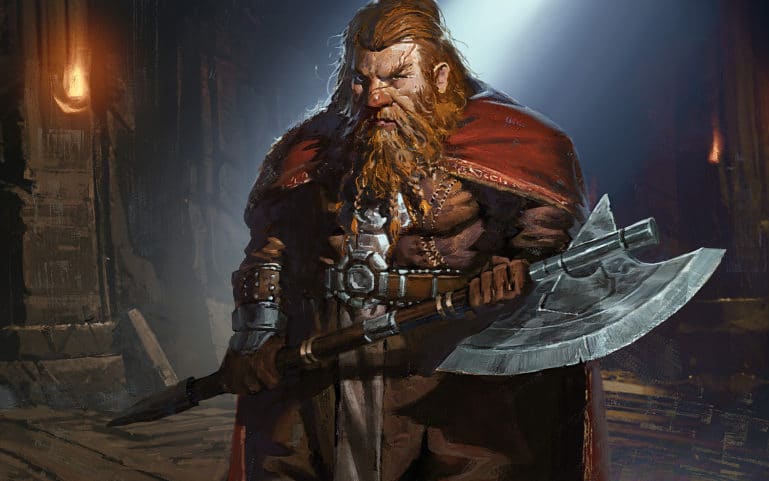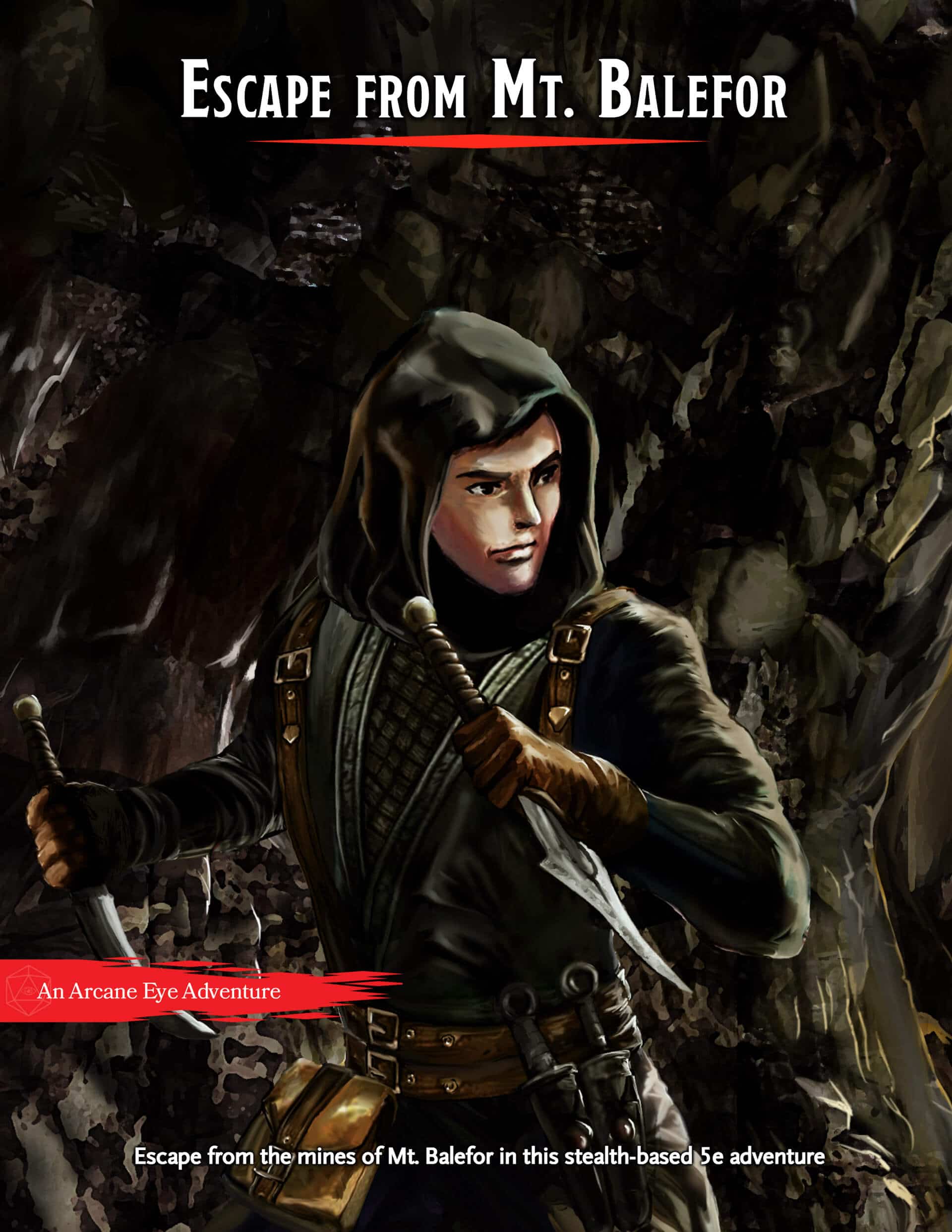Dwarf Guide 5e
Published on July 15, 2020, Last modified on May 2nd, 2022

Grzegorz Rutkowski - ©Wizards of the Coast - Torbran, Thane of Red Fell
What is this guide?
This guide is meant to give you an idea of whether or not the dwarf will be right for your 5e character build.
The color code below has been implemented to help you identify, at a glance, how good that option will be for your dwarf. This color coding isn’t a hard and fast rule; there are plenty of sub-optimized options out there that will be viable to your party and will be fun to play.
- Black is a trait shared by many races and or will not impact the effectiveness of your character build
- Red isn’t going to contribute to the effectiveness of your character build at all
- Orange Situationally good, but a below-average option otherwise
- Green is a good option
- Blue is a great option, you should strongly consider this option for your character
- Sky Blue is an amazing option. If you do not take this option your character would not be optimized
Tasha's Cauldron of Everything Update
Tasha's Cauldron of Everything has added the "Customizing Your Origin" option that may affect the ability score increases, languages, and proficiencies in this guide. To read more about this, visit our D&D Race Guide.
What are Dwarves in 5e?
Source: Player's Handbook
Bold and hardy, dwarves are known as skilled warriors, miners, and workers of stone and metal. Though they stand well under 5 feet tall, dwarves are so broad and compact that they can weigh as much as a human standing nearly two feet taller. Their courage and endurance are also easily a match for any of the larger folk.
Dwarven skin ranges from deep brown to a paler hue tinged with red, but the most common shades are light brown or deep tan, like certain tones of earth. Their hair, worn long but in simple styles, is usually black, gray, or brown, though paler dwarves often have red hair. Male dwarves value their beards highly and groom them carefully.
Dwarf 5e Traits
Ability Score Increase: +2 CON is a fairly uncommon double racial bonus.
Age: Dwarves are considered young until they are 50. They live about 350 years
Alignment: Dwarves are usually lawful good.
Size: Dwarves stand between 4-5 feet tall and weigh about 150lbs.
Speed: 25ft walking is below standard. Only Dwarves and Gnomes have this reduced speed.
Darkvision: 60ft
Dwarven Resilience: Free resistance to a common damage type and condition is always welcome.
Dwarven Combat Training: Typically, if you’re going to be using these weapons you will have the proficiency available in your class.
Tool Proficiency: Tool proficiencies don’t end up affecting most 5e games very drastically. The most useful one here is probably the smith’s tools.
Stonecunning: This will likely come in hand a couple times during the course of a campaign.
Languages: Common and Dwarvish.
Dwarf 5e Subraces
Gray
Ability Score Increase: Getting an ASI to STR in addition to the dwarf’s +2 CON is great for martial builds.
Superior Darkvision: Darkvision out to 120 feet is a solid buff and can be very helpful when exploring the Underdark.
Extra Language: Knowing undercommon is another great resource when exploring the Underdark.
Duergar Resilience: Advantage on saving throws against illusions is pretty niche, but charmed and paralyzed are common, nasty conditions.
Duergar Magic: The enlarge portion of the enlarge/reduce spell is good for buffing damage and STR skills, which is synergistic with the ASIs that the gray dwarf receives. Invisibility is an awesome utility spell to add on top of that, but not being able to cast either while in direct sunlight is a massive con for this ability.
Sunlight Sensitivity: Disadvantage on attack rolls and Perception checks while in sunlight is a game-breaking debuff for most campaigns. If you’re playing a campaign that focuses on dungeon delving or the Underdark, you might be able to get by.
Hill
Ability Score Increase: +1 WIS is quite useful because that is the highest WIS bonus PHB races can get.
Dwarven Toughness: More hitpoints, even the minute amount given by this trait, are always useful.
Mark of Warding
Ability Score Increase: An ASI to INT makes this a solid option for casters interested in INT. The combo of CON and INT is also an interesting option for these casters as they usually have troubles with survivability.
Warder’s Intuition: a d4 bonus Investigation and checks made with theives’ tools is certainly an interesting feature. If you don’t have a rogue in your party, this feature certainly becomes stronger as it can help enable a cross-functional build. As it stands, it’s quite a situational trait.
Wards and Seals: While alarm and arcane lock are situational spells, mage armor is an nice spell to have a free casting of once per day for most casters.
Spells of the Mark: There aren’t a ton of spells in this list that are a big draw. Armor of Agathys is probably the best spell on this list, with the rest being situational utility spells.
- 1st level
- Alarm: This spell is relatively useful whenever you’re resting. What’s better is it can be cast as a ritual. If you have Ritual Casting, this is never a bad pick.
- Armor of Agathys:
- 2nd level
- Arcane Lock: Surprisingly, a useful little utility spell. The effect lasts until dispelled so it’s a good thing to use on a home base when you have the spell slots to spare. Of course, the lock can be bypassed with knock but you’ll be able to hear someone using knock while you’re within 300ft. Overall, you don’t want this stocked unless you’re really paranoid or need to lock down an area.
- Knock: Great spell if you don’t have a rogue around and works better than Thieves’ Tools anyway since it works automatically. If you need to be stealthy, keep in mind that this spell is audible from 300 feet away.
- 3rd level
- Glyph of Warding: Costly components and a long casting time are the major hurdles in the way of making glyph of warding a stellar spell. As it stands, its probably the best way to set a trap if you know where the enemy will be coming through and have at least an hour to prepare.
- Magic Circle: While celestials, elementals, fey, fiends, and undead are quite common, this spell provides a very lackluster effect against them. As the creatures can still attack inside the cylinder and can still teleport out using a CHA save, it’s not very effective at containing, nor protecting from, these creatures.
- 4th level
- Leomund’s Secret Chest: Hide stuff in the ethereal plane. Very, VERY situational.
- Mordenkainen’s Faithful Hound: Seeing as the hound can only attack creatures within 5ft of it and can’t move, it is very situational.
- 5th level
- Antilife Shell: Great option if you find yourself in trouble in melee combat. It will also hedge out your allies so keep that in mind.
Mountain
Ability Score Increase: Getting +2 from CON from the base racial bonus and +2 to STR from the subrace bonus is absolutely amazing for most martial classes.
Dwarven Armor Training: Typically, if you’re going to be using these armor types you will have the proficiency available in your class. This can be beneficial for spellcasters looking to boost their AC.
Sources Used in This Guide
- BR: Basic Rules
- GotG: Bigby Presents: Glory of the Giants
- SotDQ: Dragonlance: Shadow of the Dragon Queen
- ERLW: Eberron: Rising from the Last War
- EEPC: Elemental Evil Player’s Companion
- EGtW: Explorer’s Guide to Wildemount
- FToD: Fizban's Treasury of Dragon
- GGtR: Guildmasters' Guide to Ravnica
- MotM: Monsters of the Multiverse
- MToF: Mordenkainen’s Tome of Foes
- MOoT: Mythic Odyessys of Theros
- PAitM: Planescape: Adventures in the Multiverse
- PHB: Player's Handbook
- SAiS: Spelljammer: Adventures in Space
- SCoC: Strixhaven: A Curriculum of Chaos
- SCAG: Sword Coast Adventurer’s Guide
- TCoE: Tasha’s Cauldron of Everything
- TTP: The Tortle Package
- WBtW: The Wild Beyond The Witchlight
- VRGtR: Van Richten's Guide to Ravenloft
- VGtM: Volo's Guide to Monsters
- XGtE: Xanathar’s Guide to Everything
